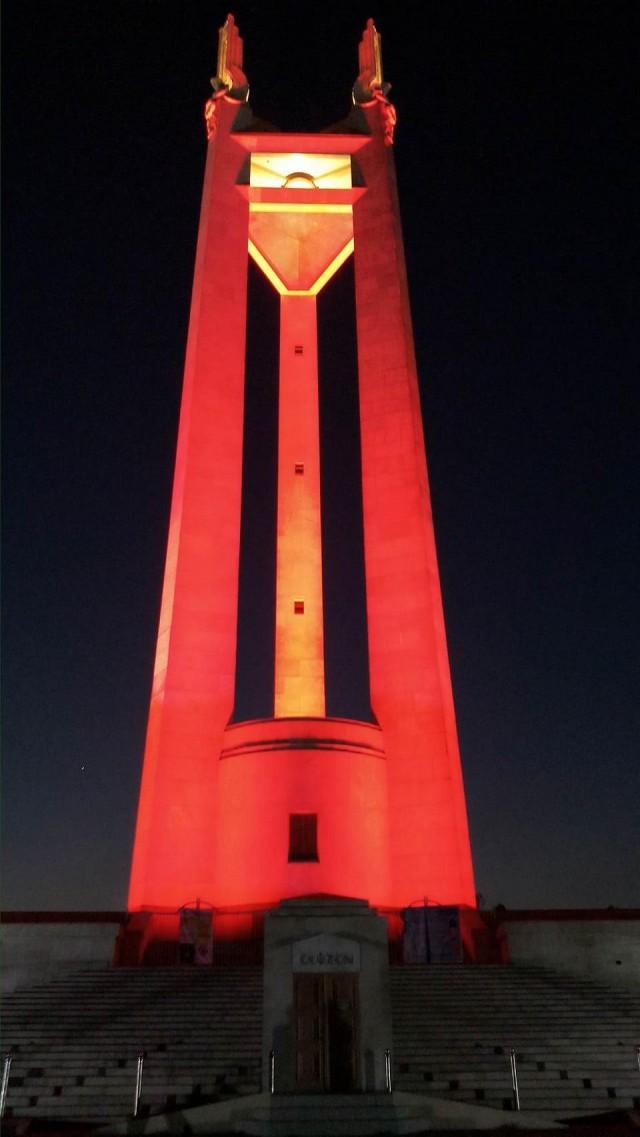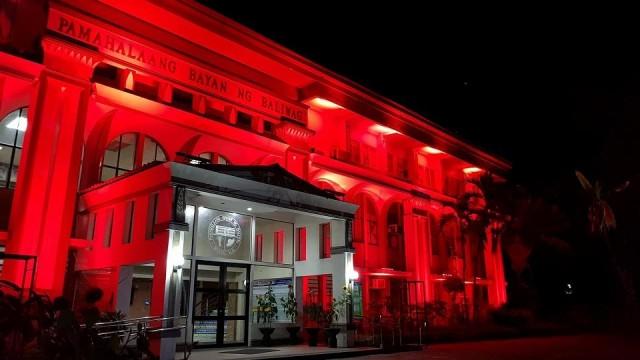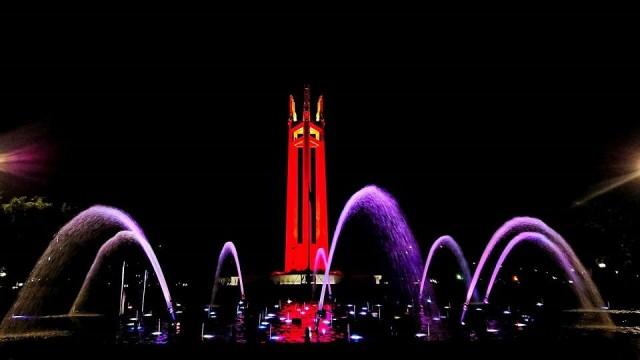QC Shrine, Baliwag town hall illuminated in red on World Hemophilia Day

The Quezon Memorial Shrine in Quezon City and the municipal complex of Baliwag, Bulacan were illuminated in red on Tuesday as part of a global campaign to raise awareness about hemophilia and other inherited bleeding disorders.
Citing data from the World Federation of Hemophilia (WFH), Hemophilia Advocates-Philippines (HAP) president Andrea Trinidad-Echavez said at least 10,000 Filipinos are afflicted with hemophilia, a group of rare and inherited bleeding disorders in which the patient’s blood lacks the ability to clot normally.
In a statement, the HAP thanked QC Mayor Herbert Bautista and Baliwag Mayor Ferdie Estrella for showing their support on April 17 in celebration for World Hemophilia Day.
“The more we share about hemophilia and related bleeding disorders, the more people become aware of their symptoms. We hope that with increased awareness, those who are suffering in silence or may be misdiagnosed, will finally get help,” Echavez said.

In the Philippines, April was declared National Hemophilia Awareness Month by then-President Gloria Macapagal-Arroyo in 2008.
According to HAP, symptoms of hemophilia include frequent nosebleeds and gumbleeds; unexplained and excessive bleeding from cuts or injuries, or after surgery or dental work; large or deep bruises; or unusual bleeding after vaccinations.
In women, prolonged and heavy menstruation could also be a symptom of blood disorders.
Speaking before a commemorative exhibit in Makati City last Sunday, Health Assistant Secretary Eric Tayag said the Department of Health (DOH) plans to create a technical working group to develop a national policy to address blood disorders such as hemophilia, thalassemia and aplastic anemia.

Tayag emphasized there is currently no national integrated policy on the prevention, control and management of hemophilia and other bleeding disorders.
"The absence of such national policy prevents a comprehensive whole of sector and health systems approach to address the various concerns of health professional organizations, patient organizations and civil society groups, clamoring for improve access to standard medical care and services including screening, diagnostic tests and adequate treatment,” the official added.
HAP also quoted Senator Joel Villanueva as saying he would continue pushing for the passage of Senate Bill 1335, which seeks to mandate the creation of Hemophilia Treatment Centers (HTCs) all over the Philippines and provide free treatment for persons with hemophilia and bleeding disorders. The bill, authored by Villanueva, was co-authored by Senators Nancy Binay.
Senator JV Ejercito, on the other hand, sponsored a similar measure under Senate Bill 1389.
Counterpart bills, House Bill 5355 and House Bill 6986, have also been filed in the House of Representatives respectively by Quezon City Representative Alfred Vargas and Bagong Henerasyon party-list Representative Bernadette Herrera-Dy. — Margaret Claire Layug/BM, GMA News




